Plan and deliver comprehensive, adolescent- and youth-friendly programmes
PLAN
Careful design and planning are crucial for scaling up HIV prevention programmes. It is important to consider what interventions address the specific needs of adolescents and young people from key populations, how best to reach them, and how to make services youth-friendly.
 Global Accelerated Action for the Health of Adolescents (AA-HA!)
Global Accelerated Action for the Health of Adolescents (AA-HA!)This summary document provides guidance for governments on how to respond to the health needs of adolescents—what to do and how to do it. The website also provides a summary document for the guidance, brochures, a comic book and infographics.
Global Accelerated Action for the Health of Adolescents (AA-HA!) - Guidance
Global Accelerated Action for the Health of Adolescents (AA-HA!) - Summary - Arabic
全球加快青少年健康行动 (AA-HA!) 支持国家实施工作的指导意见—概要 - Chinese
Action mondiale accélérée en faveur de la santé des adolescents (AA-HA!) - Orientations - French
Ação Global Acelerada para a Saúde de Adolescentes (AA-HA!) - Guia de Orientação - Portuguese
Глобальное ускорение действий в интересах здоровья подростков (АА-HA!) - Резюме
WHO, 2017
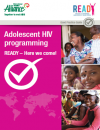 Adolescent HIV programming - READY Here we come! Good practice guide
Adolescent HIV programming - READY Here we come! Good practice guideThis guide offers implementation guidance and support for providing sexual and reproductive health services to adolescents and young people from key populations or who are living with HIV. It can be used to develop policies and standard operating procedures—as well as for training. Topics include adolescent development, service delivery, meaningful participation, informed consent, and communication with adolescents.
Adolescent HIV programming - READY Here we come! Good practice guide
Programmation de la lutte contre le VIH pour les adolescents - READY Nous voici! Guide de bonnes pratiques
Programacao de HIV para adolescentes - READY Ca estamos! Guia de boas praticas
International HIV/AIDS Alliance, 2017
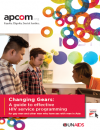 Changing gears: A guide to effective HIV service programming for gay men and other men who have sex with men in Asia
Changing gears: A guide to effective HIV service programming for gay men and other men who have sex with men in AsiaThis is a framework for designing or assessing comprehensive HIV services for men who have sex with men. It covers collecting and analysing data, providing a service package (including PrEP and newer HIV testing methods), reaching young men who have sex with men, and tackling related health and social problems.
APCOM, 2016
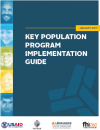 Key population program implementation guide
Key population program implementation guideThis guide details the steps to design and deliver effective services to key populations, with a view to scaling up. It is based on a cascade framework that aims to help people from key populations be engaged in planning and delivering programmes and to ensure that those at risk are supported to remain on a continuum of prevention; testing; and (if needed) treatment, care, and viral suppression.
FHI 360 LINKAGES, 2017
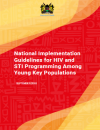 National implementation guidelines for HIV and STI programming among young key populations
National implementation guidelines for HIV and STI programming among young key populationsThese guidelines were developed as part of Kenya's fast-track plan to end AIDS among adolescents and young people. Based on research into adolescent and young key populations in Kenya and elsewhere, the guidelines outline a package of HIV prevention services and emphasize the need to combine biobehavioural interventions with services in education, job skills training, mental health, and social care and protection.
FHI 360 LINKAGES, 2017
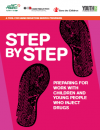 Step by step: Preparing to work with children and young people who inject drugs
Step by step: Preparing to work with children and young people who inject drugsThis resource is intended for harm-reduction service providers with limited experience of working with children and young people who inject drugs. It sets out a quick and inexpensive process of exercises and other activities to prepare to work with children and young people under age 18. It is designed to help the organisation and staff feel safe and to support them in thinking through the challenging situations and decisions that they may face.
International HIV/AIDS Alliance, Harm Reduction International, Save the Children, Youth RISE
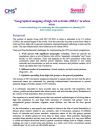
A methodology to count the number of high-risk population members active in a given geographical area, classify groups according to their risk behaviours and derive basic insights into factors that make them vulnerable to HIV.
>Catalyst Management Services
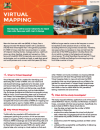 Virtual mapping: Harnessing online social networks to reach men who have sex with men in Kenya
Virtual mapping: Harnessing online social networks to reach men who have sex with men in KenyaThis brief describes a study that mapped websites, social media apps and online groups used by men who have sex with men. The results included estimates of the number of people using the sites, and an understanding of their HIV risk behaviours, service needs, and interest in HIV self-testing.
NASCOP, University of Manitoba, 2018
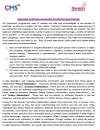 [Network mapping:] Approach to female sex worker enrolment and dropout
[Network mapping:] Approach to female sex worker enrolment and dropoutA protocol and sample tools for network mapping to identify and enroll unreached or hidden populations for services. Rather than relying on one-off static counts at a given location, network mapping is a dynamic process that engages key population members to map their changing networks of contacts. The document describes the methodology, and provides sample checklists and illustrations of data collection sheets.
Swasti Health Catalyst, Catalyst Management Services, 2018
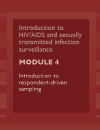 Introduction to HIV/AIDS and sexually transmitted infection surveillance. Module 4: Introduction to respondent driven sampling
Introduction to HIV/AIDS and sexually transmitted infection surveillance. Module 4: Introduction to respondent driven samplingA course for self-study or as part of training, describing respondent-driven sampling (RDS) and how to plan and implement it with key populations.
Introduction to HIV AIDS and sexually transmitted infection surveillance. Module 4 - Introduction to respondent driven sampling
Module 4 - Supplement - A guide to using RDS Analyst and NetDraw
WHO, 2010
 PLACE: Priorities for Local AIDS Control Efforts: A manual for implementing the PLACE method
PLACE: Priorities for Local AIDS Control Efforts: A manual for implementing the PLACE methodUsing a venue-based approach, the PLACE Method lays out a step-by-step method for monitoring HIV prevention among key populations. This guide is designed for implementation within a short period of time by local personnel equipped with a word-processing program and freely available data entry, analysis and mapping programs. The Measure Evaluation website provides additional tools.
Measure Evaluation, 2005
 Gender analysis toolkit for key population HIV prevention, care, and treatment programs
Gender analysis toolkit for key population HIV prevention, care, and treatment programsA gender analysis can increase the effectiveness of HIV prevention, care, and treatment activities for key populations by identifying the specific gender issues, describing how they could affect the programme’s goals, and identifying ways to work around barriers and leverage opportunities. This toolkit outlines key considerations and steps for conducting a gender analysis, explains how to engage with stakeholders, provides tools and resources, and gives examples of gender analyses conducted in Kenya and Cameroon.
FHI 360 LINKAGES, 2017
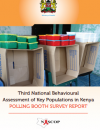 Third national behavioural assessment of key populations in Kenya: Polling booth survey report
Third national behavioural assessment of key populations in Kenya: Polling booth survey reportA report on the use of polling booth surveys to track the behaviours of key populations in Kenya. It provides a detailed description of how to run a polling booth survey, as well as outlining the results, including for members of young key populations.
NASCOP, University of Manitoba, 2018
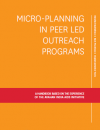 Microplanning in peer-led outreach programs: A handbook based on the experience of the Avahan India AIDS Initiative
Microplanning in peer-led outreach programs: A handbook based on the experience of the Avahan India AIDS InitiativeThis handbook describes the steps involved in planning and implementing microplanning for outreach to key populations. It provides examples of microplanning tools and forms from programmes around the world.
Bill & Melinda Gates Foundation, 2013
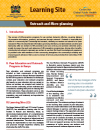 Learning site: Outreach and Micro-planning
Learning site: Outreach and Micro-planningThis short, illustrated guide defines steps in planning and implementing outreach for sex workers, including site mapping, recruiting community outreach workers, delivering outreach services, and microplanning.
NASCOP, University of Manitoba, 2015
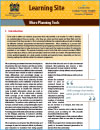 Learning site: Micro planning tools
Learning site: Micro planning toolsThis short, illustrated guide to microplanning defines steps in conducting outreach to sex workers, including site mapping, spot analysis, contact listing, peer plans, and opportunity gap analysis.
Bill & Melinda Gates Foundation
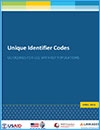 Unique identifier codes: Guidelines for use with key populations
Unique identifier codes: Guidelines for use with key populations This is a guide to unique identifier codes (UICs) for key populations receiving HIV services. UICs ensure that an accurate record is kept of the HIV services each individual receives, while respecting the person’s confidentiality. The guide shows how to create UICs, discusses ethical and technical considerations, and offers case studies.
FHI 360 LINKAGES, 2013
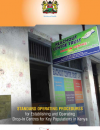 Standard operating procedures for establishing and operating drop-in centres for key populations in Kenya This resource provides guidance on planning, setting up, managing, and monitoring a drop-in centre—including establishing community committees for oversight and safety considerations.
Standard operating procedures for establishing and operating drop-in centres for key populations in Kenya This resource provides guidance on planning, setting up, managing, and monitoring a drop-in centre—including establishing community committees for oversight and safety considerations.NASCOP, University of Manitoba, 2016
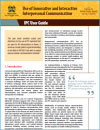 Use of innovative and interactive interpersonal communication: IPC user guide
Use of innovative and interactive interpersonal communication: IPC user guideThis case study provides scripts and directions for the use of IPC materials for HIV prevention with key populations in Kenya. Six different approaches are described step by step, addressing low clinic attendance, HIV testing, and condom use.
NASCOP, University of Manitoba, 2015
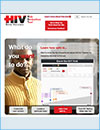 HIV risk reduction tool This website offers comprehensive information on HIV, safer sex behaviours, and HIV testing sites. It links to many other documents produced by the U.S. Centers for Disease Control and Prevention (CDC).
HIV risk reduction tool This website offers comprehensive information on HIV, safer sex behaviours, and HIV testing sites. It links to many other documents produced by the U.S. Centers for Disease Control and Prevention (CDC).US Centers for Disease Control and Prevention
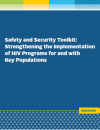 Safety and security toolkit: Strengthening the implementation of HIV programs for and with key populations This guide helps HIV programme implementers—particularly those working in direct service delivery—address safety and security challenges when implementing programmes for and with key populations. It is designed for use in environments where members of key populations are criminalized and face elevated levels of stigma, discrimination, and violence. It identifies promising practices and tools, makes recommendations to address safety and security challenges, and provides a systematic approach (via checklists) to identify and respond to safety and security gaps.
Safety and security toolkit: Strengthening the implementation of HIV programs for and with key populations This guide helps HIV programme implementers—particularly those working in direct service delivery—address safety and security challenges when implementing programmes for and with key populations. It is designed for use in environments where members of key populations are criminalized and face elevated levels of stigma, discrimination, and violence. It identifies promising practices and tools, makes recommendations to address safety and security challenges, and provides a systematic approach (via checklists) to identify and respond to safety and security gaps.FHI 360 LINKAGES, 2018
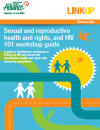 Sexual and reproductive health and rights, and HIV 101 workshop guide: A guide to facilitating a workshop on linking up HIV and sexual and reproductive health and rights with young key populations
Sexual and reproductive health and rights, and HIV 101 workshop guide: A guide to facilitating a workshop on linking up HIV and sexual and reproductive health and rights with young key populationsThis facilitator’s guide describes how to plan, deliver, and evaluate a workshop for members of young key populations. The workshop is designed to take five consecutive days in one week, although it can be adapted for shorter trainings as needed. It culminates with a site visit and group discussion. Sessions include tips and reminders for facilitators as well as lists of necessary materials. References to useful resources are also provided.
International HIV/AIDS Alliance, 2015
 Essential packages manual: Sexual and reproductive health and rights programmes for young people
Essential packages manual: Sexual and reproductive health and rights programmes for young peopleThis guide helps implementers review programmes and identify gaps and areas for improvement—in line with a rights-based, gender-transformative, and youth-centred approach. It provides definitions, examples, stories, tools, and resources. It also includes information on core values and sexual rights, comprehensive sexual education, sexual and reproductive health services, enabling environments, and how to work in partnerships.
Rutgers International, Aidsfonds, IPPF, 2016
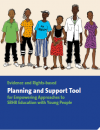 Evidence and rights-based planning and support tool for empowering approaches to SRHR education with young people
Evidence and rights-based planning and support tool for empowering approaches to SRHR education with young peopleThis tool provides an overview of the characteristics of effective, rights-based sexual and reproductive health and rights education and HIV prevention interventions for young people. It consists of a brief checklist of characteristics, with background information. Organisations can use it to analyse their intervention or to plan new interventions.
Rutgers International, Aidsfonds, 2016
 International technical guidance on sexuality education: An evidence-informed approach
International technical guidance on sexuality education: An evidence-informed approachThis resource provides guidelines to assist education, health, and other relevant authorities in developing and implementing school-based and out-of-school comprehensive sexuality education (CSE) programmes and materials. As well as background on young people's sexual and reproductive health and the evidence base for CSE, it covers key topics and learning objectives, building support for CSE, and delivering effective CSE programmes.
UNESCO, 2018
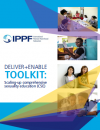 Deliver+Enable toolkit: Scaling up comprehensive sexuality education (CSE)
Deliver+Enable toolkit: Scaling up comprehensive sexuality education (CSE)This toolkit offers guidance and resources on ways to deliver comprehensive sexuality education (CSE) for children, adolescents, and youth in non-formal and formal settings and to encourage other stakeholders to develop and implement CSE policies and programmes.
Deliver+Enable toolkit - Scaling up comprehensive sexuality education (CSE)
Fournir+Rendre Possible boite a outils - Mise a l'echelle de l'education sexuelle integree (ESI)
Impartir+Habilitar caja de herramientas - Ampliando la educacion sexual integral (ESI)
IPPF, 2017
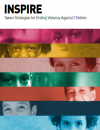 INSPIRE: Seven strategies for ending violence against children
INSPIRE: Seven strategies for ending violence against childrenThis publication presents a group of evidenced-based strategies to help countries and communities intensify their focus on the prevention programmes and services with the greatest potential to reduce violence against children. The website provides executive summary documents and infographics.
INSPIRE - Seven strategies for ending violence against children
INSPIRE - Seven strategies for ending violence against children - Arabic
INSPIRE - 消除针对儿童的暴力行为的七项策略 - Chinese
INSPIRE - Sept stratégies pour mettre fin à la violence à l’encontre des enfants - French
INSPIRE - Sete Estratégias para Pôr Fim à Violência Contra Crianças - Portuguese
INSPIRE - Семь стратегий по ликвидации насилия в отношении детей - Russian
WHO, 2016
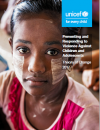 Preventing and responding to violence against children and adolescents: Theory of change
Preventing and responding to violence against children and adolescents: Theory of changeThis publication presents an overarching, multisectoral theory of change to guide UNICEF’s work on preventing and responding to violence against girls, boys, and adolescents. The theory describes pathways of change, proposes a package of evidence-based strategies, and articulates a chain of results—both to prevent violence and to improve the lives of child and adolescent victims when violence occurs.
UNICEF, 2017
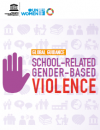 Global guidance on addressing school-related gender-based violence
Global guidance on addressing school-related gender-based violenceProvides key information for governments, policymakers, teachers, practitioners and civil-society organizations that wish to take concrete action against school-related gender-based violence. It introduces approaches, methodologies, tools and resources that have shown positive results in preventing and responding to such violence.
UNWomen, 2016
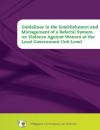 Guidelines in the establishment and management of a referral system on violence against women at the local government unit level
Guidelines in the establishment and management of a referral system on violence against women at the local government unit levelThese guidelines outline an integrated, coordinated, multidisciplinary, and gender-sensitive community response to victims of violence against women. The document is intended for service providers from law enforcement, prosecution, health, social welfare, and other local government agencies, as well as for nongovernmental organisations and faith-based organisations.
Philippine Commission on Women, 2009
 Violence prevention and response for female sex workers (YOUTH FRIENDLY)
Violence prevention and response for female sex workers (YOUTH FRIENDLY)This illustrated guide for sex workers explains what an individual experiencing violence should do. It outlines different kinds of violence (including, but not limited to, sexual violence) and explains who perpetrators of violence may be and how to report violence in accordance with constitutional and legal rights in Kenya.
NASCOP, University of Manitoba, 2017
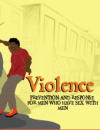 Violence prevention and response for men who have sex with men (YOUTH FRIENDLY
Violence prevention and response for men who have sex with men (YOUTH FRIENDLYThis illustrated guide for men who have sex with men explains what an individual experiencing violence should do. It outlines different kinds of violence (including, but not limited to, sexual violence) and explains who perpetrators of violence may be and how to report violence in accordance with constitutional and legal rights in Kenya. NASCOP, University of Manitoba, 2017
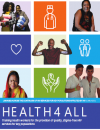 Health4all - Training health workers for the provision of quality, stigma-free HIV services for key populations
Health4all - Training health workers for the provision of quality, stigma-free HIV services for key populationsThis handbook trains healthcare workers to increase their empathy, clinical knowledge, and interpersonal skills regarding key populations—to help them provide high-quality services, free of stigma and discrimination. The guide is accompanied by slide presentations for each of the modules, available from the LINKAGES website.
Health4All - Training health workers for the provision of quality, stigma-free HIV services for key populations
Health4All - Formation des professionnels de santé pour la prestation de services liés au VIH de qualité et non-stigmatisants aux populations clés
FHI 360 LINKAGES, Intrahealth, 2018
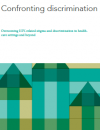 Confronting discrimination: Overcoming HIV-related stigma and discrimination in healthcare settings and beyond
Confronting discrimination: Overcoming HIV-related stigma and discrimination in healthcare settings and beyondThis report compiles the latest body of evidence on how stigma and discrimination create barriers across the HIV prevention, testing, and treatment cascades, reducing the impact of the AIDS response. It brings together best practices in confronting stigma and discrimination, with examples from numerous countries. This resource is meant for programme managers, policymakers, healthcare providers, and communities.
UNAIDS, 2018
 ¿Cuál es la diferencia? (What is the difference?) Training healthcare providers on LGBT-inclusive healthcare
¿Cuál es la diferencia? (What is the difference?) Training healthcare providers on LGBT-inclusive healthcareThis video trains healthcare providers to take a clinical history without making assumptions concerning the client's sexual orientation or gender identity. The examples include a young person from a key population. The dialogues are in Spanish, with English subtitles.
Ovejas Negras (Black Sheep Collective), Uruguay, 2013
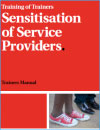 Training of trainers: Sensitizing service providers [on the needs and rights of minors selling sex]
Training of trainers: Sensitizing service providers [on the needs and rights of minors selling sex]This manual supports trainers to facilitate a three-day course to give new trainers the knowledge, skills, and practical experience required to provide sensitisation workshops for service providers working with minors who sell sex.
Training module on work with public officials on human rights and combating stigma and discrimination against gay men, other MSM and trans people
ТРЕНИНГОВЫЙ МОДУЛЬ ДЛЯ ОБУЧЕНИЯ ГОСУДАРСТВЕННЫХ СЛУЖАЩИХ ECOM (Eurasian Coalition on Male Health)
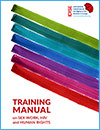 Training manual on sex work, HIV and human rights
Training manual on sex work, HIV and human rightsThis is a tool for organizing and leading a participatory community training. It can also be used for organizing advocacy campaigns or for developing sensitisation workshops and awareness-raising meetings for medical personnel, service providers, outreach workers, law enforcement agencies, and allies.
ICRSE, 2015
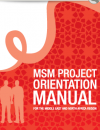 Training toolkit on MSM programming for the MENA region - MSM project orientation manual
Training toolkit on MSM programming for the MENA region - MSM project orientation manualThese are resources for training and guiding community outreach workers, peer educators, and managers of organisations that want to start programmes in their country or town (in the Middle East and North Africa region) with men who have sex with men. It consists of a project orientation manual, and a three-part training manual for volunteer peer educators.
MSM project orientation manual
Module 1 - Core knowledge
Module 2 - Skills development
Module 3 - Implementation and evaluation
International HIV/AIDS Alliance, UNAIDS, 2016
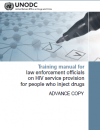 Training manual for law enforcement officials on HIV service provision for people who inject drugs
Training manual for law enforcement officials on HIV service provision for people who inject drugsThis curriculum can help law-enforcement officials and other uniformed personnel build their understanding of—and collaboration with—HIV prevention, treatment, care, and support services for people who inject drugs. It consists of eight modules with learning objectives, readings, case studies, and fact sheets.
UNODC, 2014
 Mobilising a response to HIV, gender, youth and gender-based violence in South Africa: A toolkit for trainers and programme implementers
Mobilising a response to HIV, gender, youth and gender-based violence in South Africa: A toolkit for trainers and programme implementersThis toolkit has been developed to support in-house training on gender, HIV, youth, and community mobilisation—to be implemented by senior staff, programme managers, and field workers. Exercises are grouped into modules on gender; gender and HIV; gender, HIV, and youth; and community mobilisation.
USAID, 2015
 Training module on work with public officials on human rights and combating stigma and discrimination against gay men, other MSM and trans people
Training module on work with public officials on human rights and combating stigma and discrimination against gay men, other MSM and trans peopleThis is a curriculum and guide for training government officials on observing human rights and countering stigma and discrimination against gay men, other men who have sex with men, and transgender people. It is intended for trainers and training groups that plan to work with healthcare workers, civil servants, and law enforcement agencies. The ECOM website also offers slide presentations for the training (in English).
- Тренинговый модуль для обучения государственных служащих по вопросам соблюдения
- прав человека и противодействию стигматизации и дискриминации по отношению к геям,
- другим МСМ и транс* людям.
ECOM, 2018